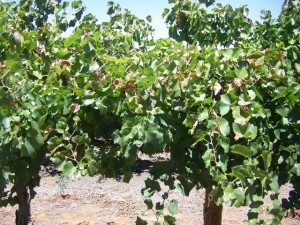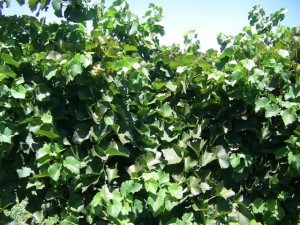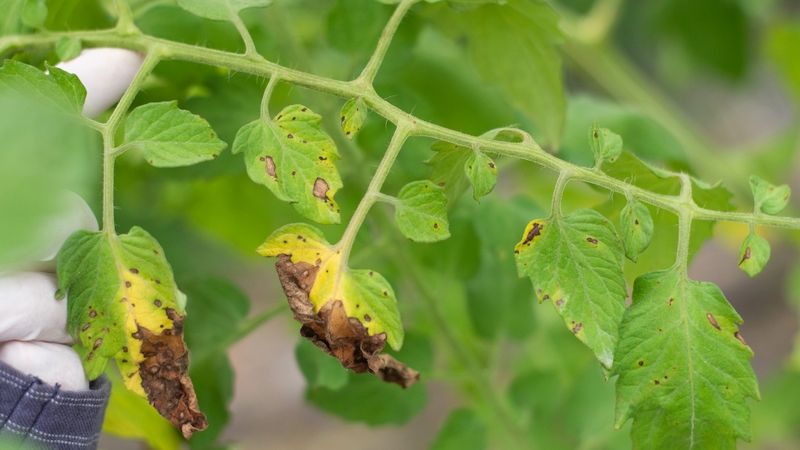Researchers Test New Method To Mitigate Vine Heat Stress

The control vines are showing some leaf scorch and exposed fruit with sunburn.
Photo: Michael McCarthy
The use of evaporative cooling in vineyards during hot weather isn’t a new concept, but researchers in Australia are testing a new method that could help vines better withstand the heat.
“What we are doing differently is only turning on the under-canopy sprinklers at night during heatwave events,” explains Mike McCarthy, principal scientist with the South Australian Research Development Institute.
There is no daytime cooling at all, and at night, the sprinklers are pulsed on and off three or four times from after sunset until dawn.
“The working hypothesis is that we are attempting to rapidly and significantly raise atmospheric humidity rather than a large drop in nighttime temperature,” McCarthy explains. “We think this may be important in allowing the vines to recover from the heat of the day.”

The vines that received the under-canopy sprinkler irrigation just on hot nights during heatwaves appear to be healthier than the control vines and have a higher yield.
Photo: Michael McCarthy
McCarthy says the idea for the experiment came from observations that winegrape growers who irrigated their vineyards at night during hot weather seemed to suffer less canopy damage than those who didn’t.
For the study, the sprinklers were pulsed on and off to maintain elevated relative humidity for as long as possible overnight, and also to conserve water.
“The one site we have thus far harvested actually yielded 10% more crop in the plot where we used the under-canopy sprinklers,” McCarthy says. “The wine company grower liaison officer who has inspected another site we will harvest this week described the fruit from the sprinkler plots as being fresher with fresh, zesty, citrus/stone fruit characteristics, with the control rows being flabby with some sour characteristics.”
He adds that many Australian grape growers think temperatures will continue to get hotter. Depending on the results of the study, this type of evaporative cooling could be just the ticket for controlling grape quality despite the extreme heat – or at least somewhat mitigating the effects of it.
McCarthy is quick to note, though, that the experiment is in the early stages. There are not yet any assessments of the wines produced from the test sites.
“All the plots will have small lot wines made, which will be subjected to extensive analytical chemistry and sensory evaluation later this year,” he says.
He’s also hopeful for additional funding to help answer more questions, such as whether drip will achieve the same effect, whether the current response in yield can be attributed to the additional water, and whether under-canopy sprinklers are the best method to achieve the change in nighttime humidity.









